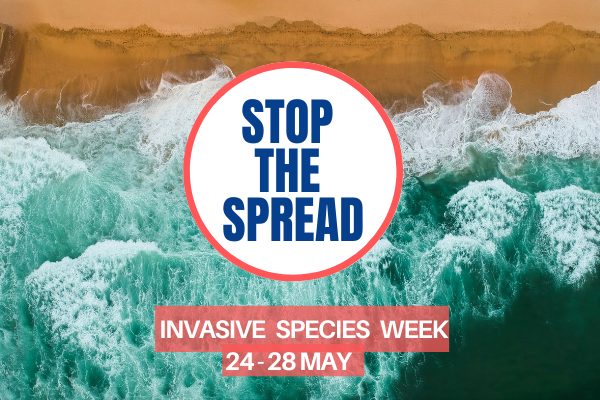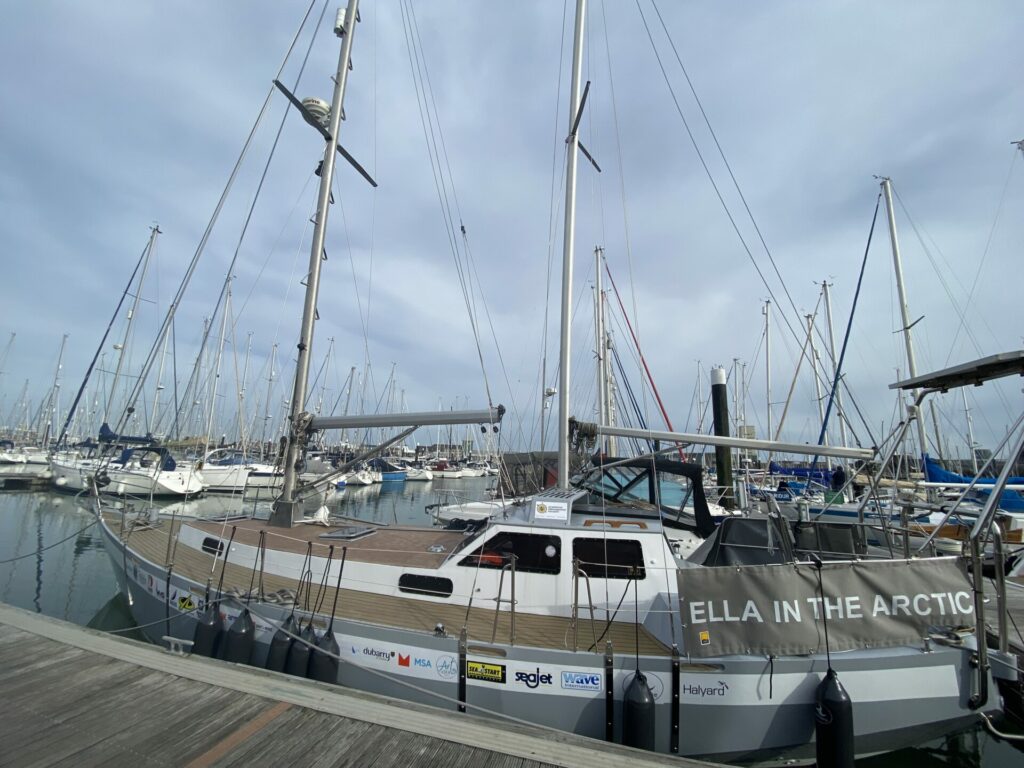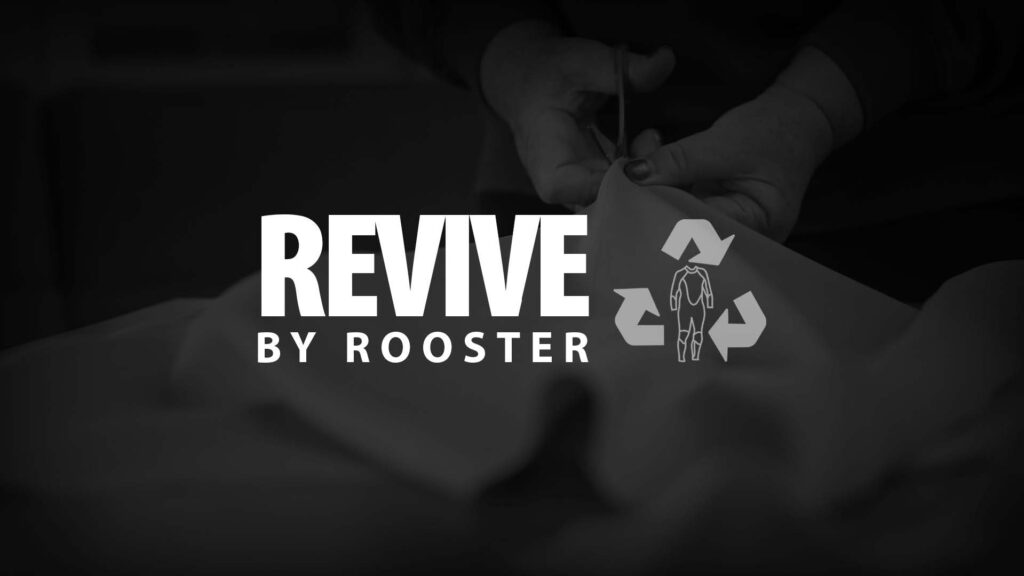Invasive Species Week returns 24 – 30 May.
The spread of non-native invasive species is becoming a major issue in both the marine and inland waters around the UK. This is because the invasive species compete with our native plants and wildlife, introduce diseases and cause major changes to entire ecosystems. They can also disrupt boating by restricting navigation, blocking inlets and outlets and increasing the bio-fouling of boats and marine structures.
The Green Blue is dedicating the 24 – 30 May to ‘Invasive Species Week.’ The week’s aim is to raise awareness of non-native invasive species, to help water users feel confident in identifying any invasive species that they encounter and to share preventative measures and tips.
Invasive species can unintentionally become transported to a new habitat by becoming attached to boats, caught in water sport’s equipment or even by latching onto our clothes. The best way to protect your local area of water is to follow the ‘Check, Clean, Dry’ approach to removing invasive species.
Check for any plant or animal material on your boat, equipment and clothing.
Clean your boat, equipment and clothing that has come into contact with the water thoroughly with tap water. Paying particular attention to crevices where species can be hidden.
Dry your craft and any piece of equipment or clothing thoroughly. Many species can survive in damp conditions for many weeks.
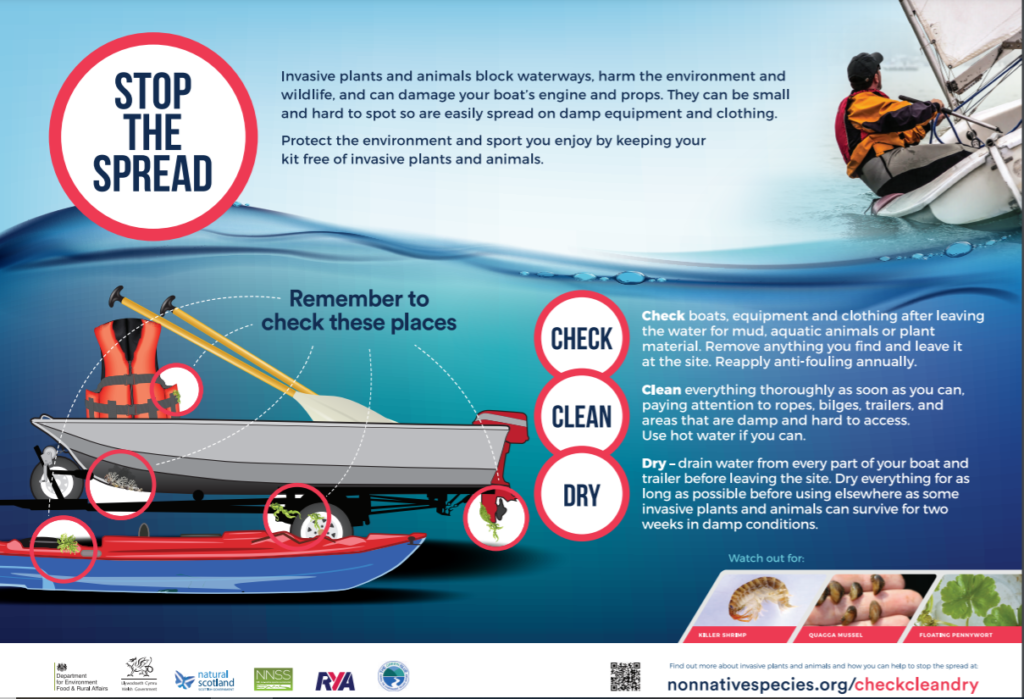
Below you will find information about some of the prolific aquatic invasive plants and animals to lookout for when spending time by the coast.
COASTAL
Wire Weed – Originally from Japan, it grows on hard substrata in shallow waters and can also live in estuarine conditions. Wire weed has a
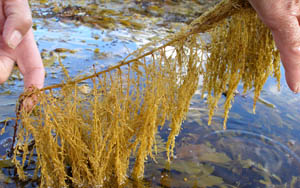
rapid growth rate and easily out competes the native seaweed species. Its dense stature means that it blocks out light and oxygen to native species in the water. In the spring months the Weed can grow up to 10 cm a day.
Wakame Seaweed – It can be identified by its green-brown leaves and its frilly base. The Seaweed is a prolific grower and excludes native algal species and alters the local food chain. It can grow up to nine feet and can create a thick canopy.
Carpet Sea Squirt – The Carpet Sea Squirt is a marine filter feeder and smothers local marine life. As an individual, it is incredibly small, however individuals live in large colonies creating the appearance of one large structure, once established they can spread fast on the seabed. The Squirt is brownish in colour and can become a serious threat to biodiversity.
Pacific Oyster – They are more irregularly shaped than the flat native oysters, and the edges of the shell have wavy, large frills. The inside of the shell is white to off/white with purple streaks. Establishment of Pacific Oysters can significantly alter diversity, community structure and ecosystems.
Chinese Mitten Crab – These crabs often begin life in lower estuaries and marine habitats and then move upstream to riverbanks and streams. They can range from green, brown to grey in colour and their front white tipped pincers are covered in dense fine white hairs. Due to their burrowing activity in riverbanks, they can cause heavy bank erosion and flooding.
FRESHWATER
Killer Shrimp – They can grow up to 30mm in length and are semi-transparent. They are predators to our native shrimp and other native fauna.
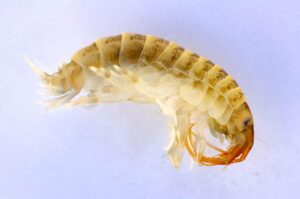
Killer Shrimps also bring with them parasites which could have a detrimental effect on local fish stocks.
Zebra Mussel – The Zebra Mussel has a distinctive ‘D’ shape and is usually a brownish-yellowish colour with zig-zag branding. They can alter whole freshwater ecosystems by filtration. Not only do Zebra Mussels attach themselves to hard surfaces like rocks and the hulls of ships, but they also attach themselves to native species.
Quagga Mussel – These mussels often roll to their side when placed on its front. They have the potential to be a major economic pest due to its ability to block water pipes and significantly reduce native biodiversity.
Floating Pennywort – It has large shiny, kidney-shaped leaves with crinkled edges and is usually found floating on slow-moving fresh water. Floating pennywort is proliferate and can grow up to 20 cm a day, restricting navigation on inland waterways, blocking out light in the water and reducing the oxygen levels for other plants and animals.
Water Primrose – This plant has only just begun to appear in Britain. Originally from South America, it has a flower with 5 bright yellow petals and small round seed pods. The leaves can range from long and thin to almost completely round in shape. If it were to establish widely in Britain it could cost as much as £242 million to manage.
For further information about Invasive Species Week visit the dedicated campaign page on The Green Blue website where you will find guidance on how you can improve the biosecurity of your sailing club or centre, as well as advice for how we can all do our bit to prevent the spread of invasive species.

